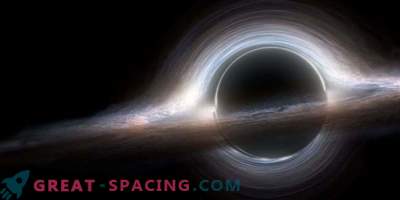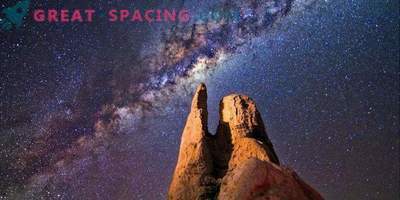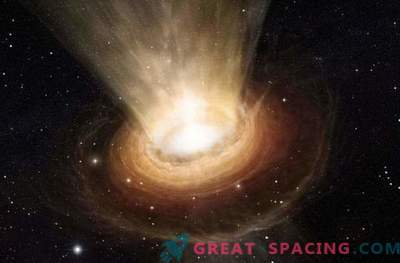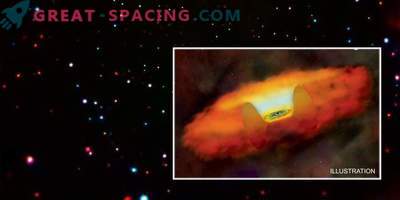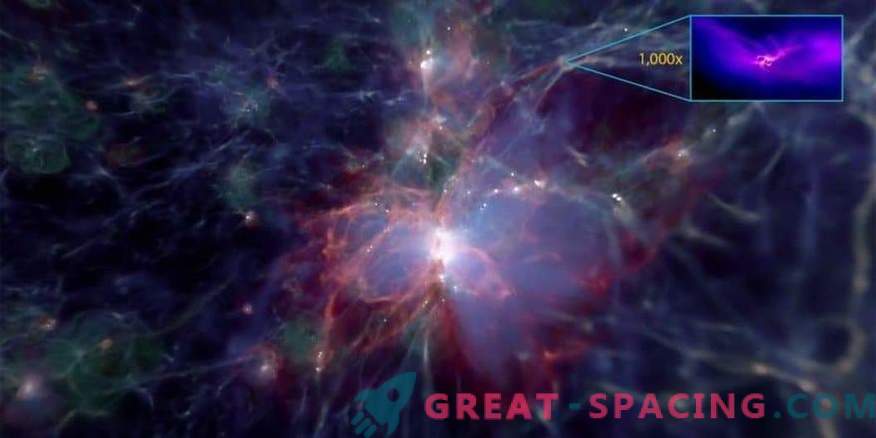
An area with a width of 30,000 light years from a supercomputer simulation shows a cluster of young galaxies that generate radiation (white) and metals (green), heating the surrounding gas. Outside the heated area is a dark matter halo that forms three supermassive stars (inset), each of which is 1000 times more massive than the Sun. For billions of years, stars will become black holes
Scientists rethink the process of birth of the first supermassive black holes. It is commonly believed that the original “seeds” sprouted in areas crowded with ultraviolet rays from neighboring galaxies. This idea prevents the emergence of normal stars, directing material into black holes.
The new study suggested another phenomenon that played a more important role in the process of suppressing star birth. We are talking about the rapid growth of dark matter “halos” - a mysterious material that makes up most of the material Universe (does not absorb or reflect light). That is, instead of studying radiation, the researchers traced how quickly the halos grow.
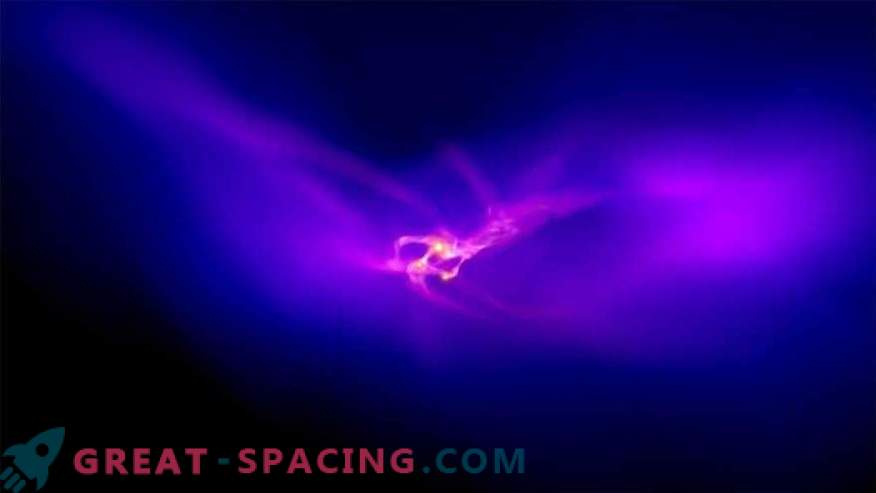
An increase in the inner 30 light-years of dark matter aureole. The rotating gaseous disk breaks down into three bunches, which under the influence of their own gravity are destroyed, forming supermassive stars.
Scientists focused on halos after analyzing the evolution model of the early Universe. The simulation revealed 10 halos of dark matter covering only gas clouds. This is surprising, because their massiveness was enough to become star nurseries. The researchers then conducted an additional simulation of two halos (each reached a width of about 2,400 light years) in order to gain a more detailed understanding of what could have happened just 270 million years after the birth of the Universe. It is in these overly dense areas of space that we managed to see how black holes are formed. Dark matter creates most of gravity, after which the gas is in this gravitational potential, where it can create stars or a massive black hole.
The analysis showed that the black holes were where the halos were formed, and their own growth was stimulated by the merging of gas clouds, from which the nascent galaxy was formed. These conditions lead to the emergence of only a few supermassive stars, and not many small standard stars.
Supermassive stars live fast and die young. As a result, they collapse into black holes, while solar stars live for billions of years and become white dwarfs. After a long time interval, the newborn black holes turn into supermassive monsters.
Scientists also found that the fast-growing halos of dark matter were probably quite common in the history of the universe to have impressive influence. It is believed that this scenario can be the source of the most massive black holes, both at the beginning of the Universe and in our time.




